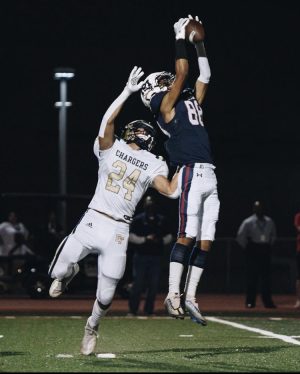Student athletes should earn PE credits
February 22, 2016
For years, the debate continues on whether or not after school sports should count as PE credits. Currently, three years of marching band and two years of JROTC can replace the PE credit. However, participating in sports does not count.
Students who participate in after school sports sweat and work for at least two hours every school day, not including extra practices or games, but for some reason, this is not considered equivalent to an hour of working out.
The Arizona Physical Education Standards state that the student can (1) exercise, (2) can apply their knowledge of concepts related to working out, (3) have the ability to maintain their health, (4) have responsible physical and social behavior, and (5) recognize the value of exercise for health.
Extracurricular sports could meet all of them for the following reasons: (1)Obviously, students who play sports are exercising, (2) when they practice outside of school, play games, or play in clubs or recreational teams, they are applying their knowledge of the game, (3), people playing sports will definitely have the ability to maintain their health because most people will continue to play, (4) players have responsible behavior because they need to have better records in order to be eligible to play, and (5) people who choose to play sports obviously recognize the value of exercise.
“Someone that is in a Phys. Ed. Class has a consistent physical approach that lasts for a whole year,” Coach Harold Bull said.
The most popular arguments for the negative side are that: that after school sports do not meet state requirements for PE, after school sports are a choice, and that if athletes received credit for sports, it would stop them from participating in PE.
This can be easily solved. If a year is the standard for a PE Credit, why not have three seasons of a sport count as a PE credit, since there are three seasons of sports in the school year? After all, three years of Marching Band count as a PE Credit. This can be adjusted as needed for year-round sports like Spiritline. As two years of JROTC counts as one PE Credit, then perhaps further debate is needed, but the year-round issue can be worked around in a multitude of ways.
“The component that they’re (students who don’t take PE; taking Marching Band; taking ROTC; etc.) missing are nutrition, our canvas articles on sugar, etc,” Bull said.
So, if what sports kids are missing is nutrition, have them learn about it. They are already required to watch videos on concussions, adding a little bit about nutrition and the future would be an easy fix. I am not asking for an easy, instantaneous change (although it would be nice). There are things that are and should be important to both sides of this debate.
Any concerns about meeting the PE Standards can be discussed and changed within the sports.
Yes, after school sports are a choice. But for a lot of athletes, sports are not just for pleasure, they rely on those sports to help them get into a good college. Sports scholarships can help to pay for students who cannot afford the tuition. And sports are important to education as well. They serve as motivation to help students get their grades up.
McClintock, three years of Marching Band can count as a PE Credit, and two years of JROTC can count as a PE credit. Additionally, dance counts as a PE credit, but it is an actual class. So, what does Marching Band do that football doesn’t? What does JROTC do that Soccer does not? What does Dance do that Spiritline does not? There is no distinguishable reason why these activities, which are all choices as well, are able to earn a PE Credit and sports are not.
PE takes up valuable time in a student’s schedule. If a sport counts as a PE credit then that frees up time for students to take AP classes or extra credits. It allows students who would otherwise be forced to take the class over the summer to spend that time on internships and college camps.
For all these reasons, after school sports should count as PE Credits.



